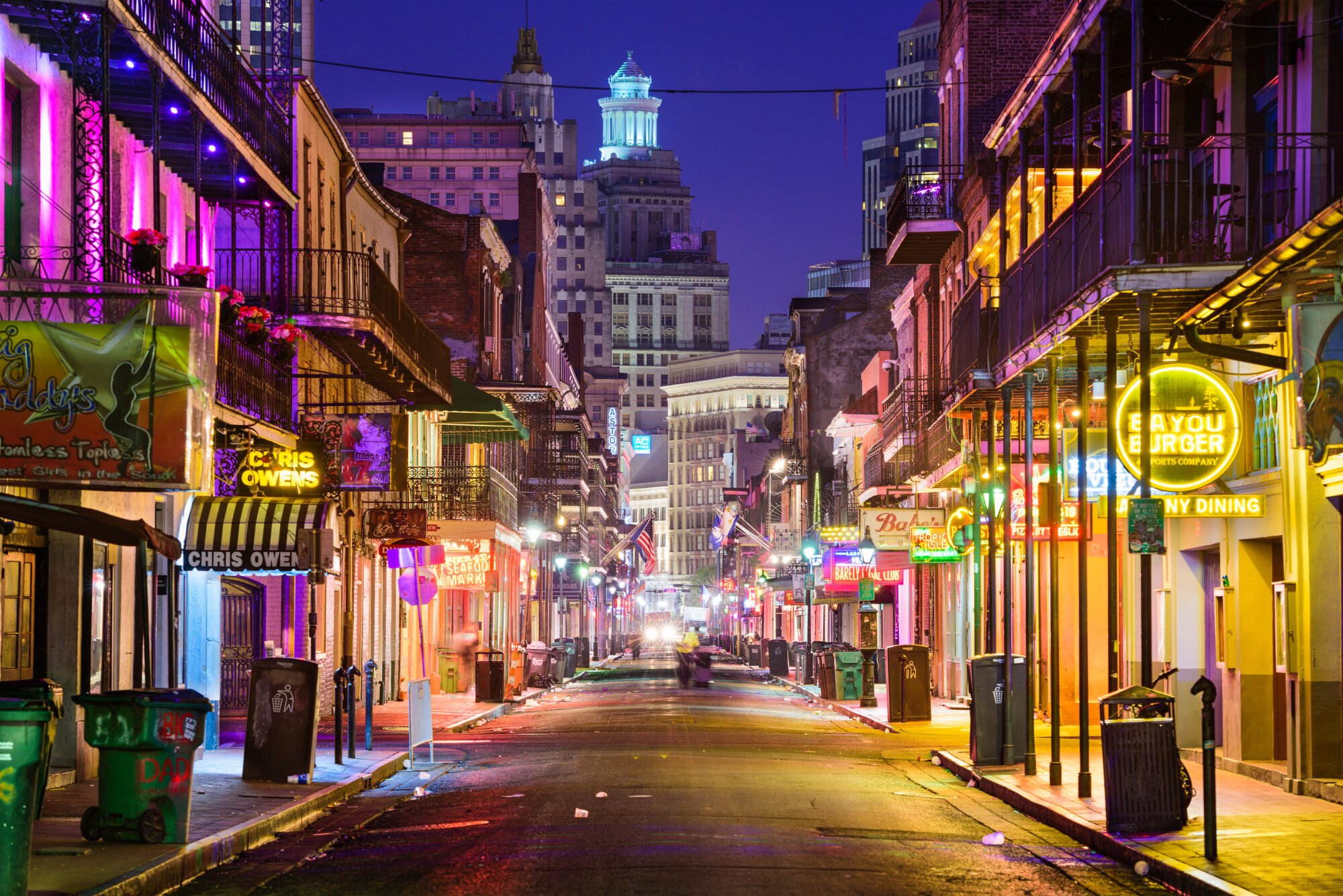New Orleans is a one-of-a-kind destination with an authentic spirit, deeply rooted culture and rich history. This little corner of the American South is a melting pot of sights, sounds, flavors and cultures.
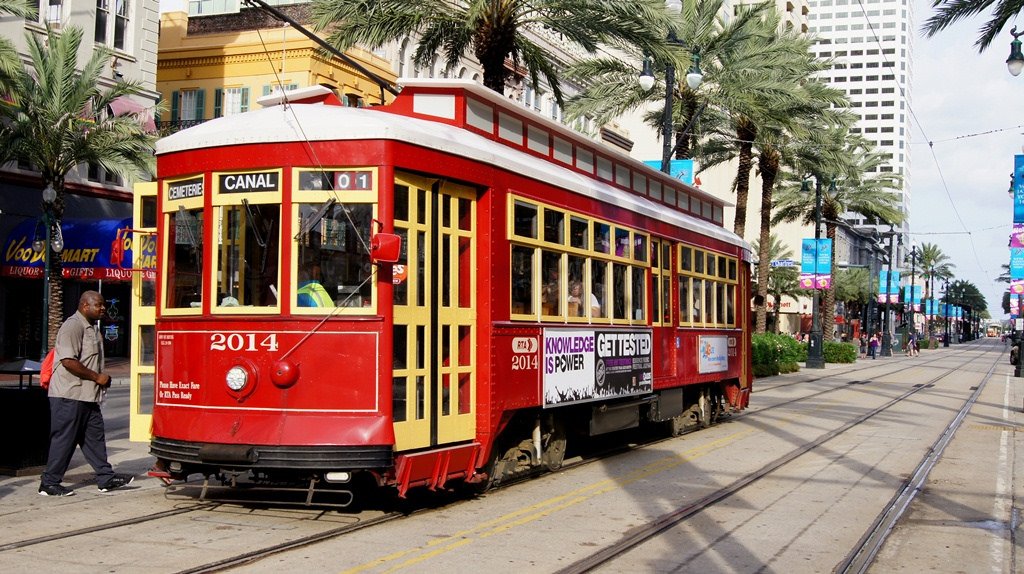
Courtesy of hmerinomx via Flickr
New Orleans, with a population approx. 390,000 strong, offers thousands of acres of green space for visitors and residents to enjoy including parks, playgrounds, neutral grounds and streets lined with towering oak trees.
New Orleans City Park is one of the oldest and largest urban parks in the country, with more than 1,300 acres and several attractions.
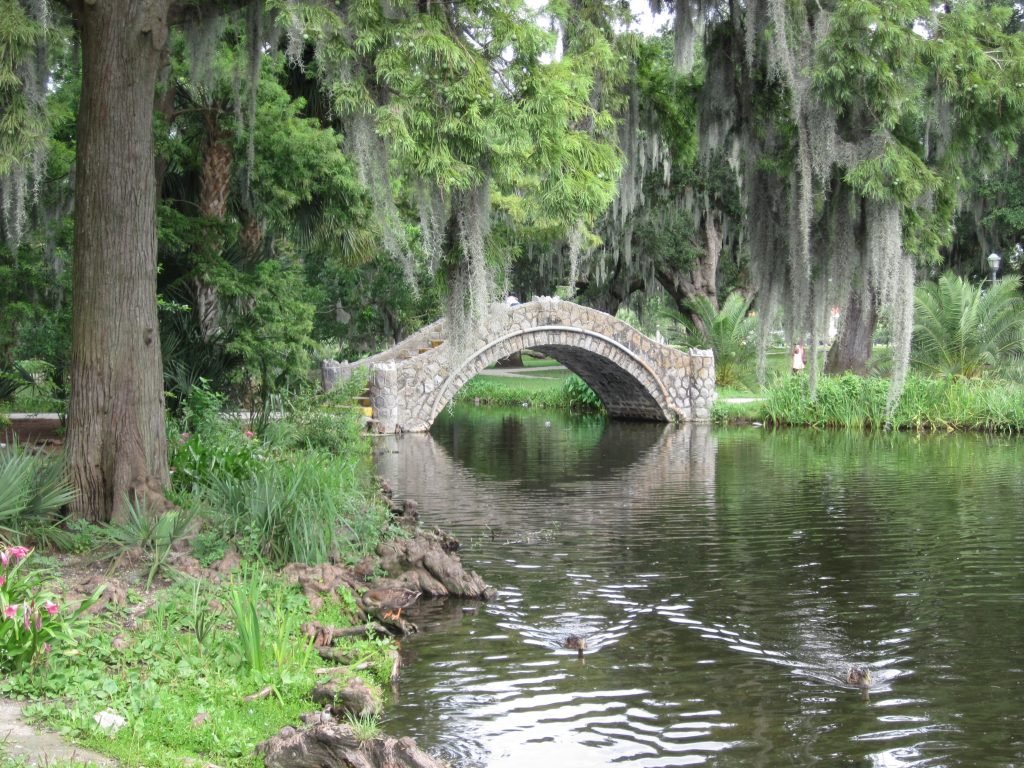
Courtesy of Wikipedia
Audubon Park is a scenic green space in Uptown New Orleans that includes walking and biking trails as well as a golf course and bird sanctuary, and Crescent Park offers scenic views of downtown New Orleans from the Mississippi River in the Bywater neighborhood.
New Orleans’ newest green space is Lafitte Greenway, which is a rails-to-trails linear park connecting Armstrong Park at the edge of the French Quarter to City Park.
More than 2,000 acres of public green space is managed by the city’s Parks and Parkways departments, which includes two major parks and 200 smaller parks and squares, including Jackson Square, Armstrong Park/Congo Square, and Lafayette Square, as well as New Orleans’ neutral grounds, the 18-hole Joseph M. Bartholomew Municipal Golf Course, located in Pontchartrain Park, and more than 450,000 trees.
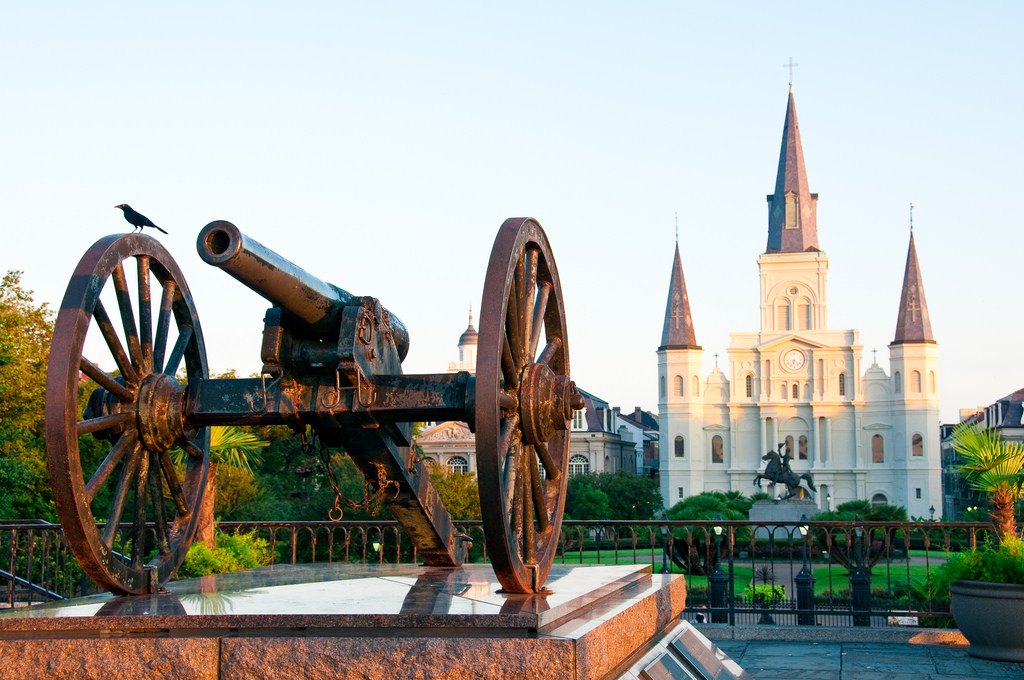
Courtesy of Christian Senger via Flickr
As a historic port city, New Orleans has been influenced by a wide variety of cultures and traditions. The city’s willingness to embrace new cultures has created a true melting pot – or gumbo – of a city. The diversity keeps life interesting and keeps visitors coming.
Louis Armstrong New Orleans International Airport currently hosts 15 airlines and serves 54 nonstop destinations with approximately 140 daily departures.
Two major Amtrak routes bring riders to and from Chicago as well as New York City.
With four major cruise lines sailing out of New Orleans along the mighty Mississippi River, it’s easy to make a trip to New Orleans two vacations in one.
Individuals with special needs can find more information for getting around the city here: http://www.neworleansonline.com/tools/transportation/gettingaround/handicap-transportation.html
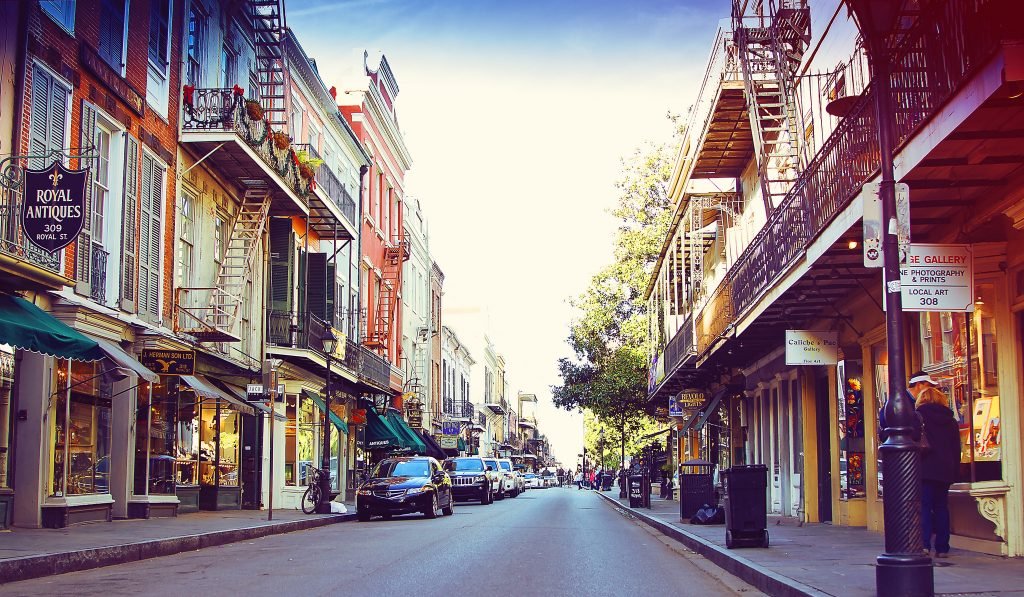
Courtesy of .distracted via Flickr
The streets of New Orleans are as varied as the unique people who inhabit them. From the iconic, oak-lined St. Charles Avenue, to the bustling streets of the historic French Quarter, the art and architecture of each corner tells a story about the history of one of America’s oldest cities.
Lovingly known as the Crescent City, the streets and avenues of the city follow the crescent curve of the Mississippi River meaning few streets go directly North and South or East and West.
Magazine Street, which stretches six miles from the Central Business District to the Riverbend, is a favorite destination for shopping and dining, and Royal Street in the French Quarter is known for its antiques, art galleries and pedestrian mall.
New Orleans is a literary city, influencing great writers such as Tennessee Williams, Ernest Hemingway, Truman Capote and many more. The Hotel Monteleone’s Carousel Bar was a favorite stop for authors, and the hotel itself is a national literary landmark. See New Orleans’ other literary influences here.
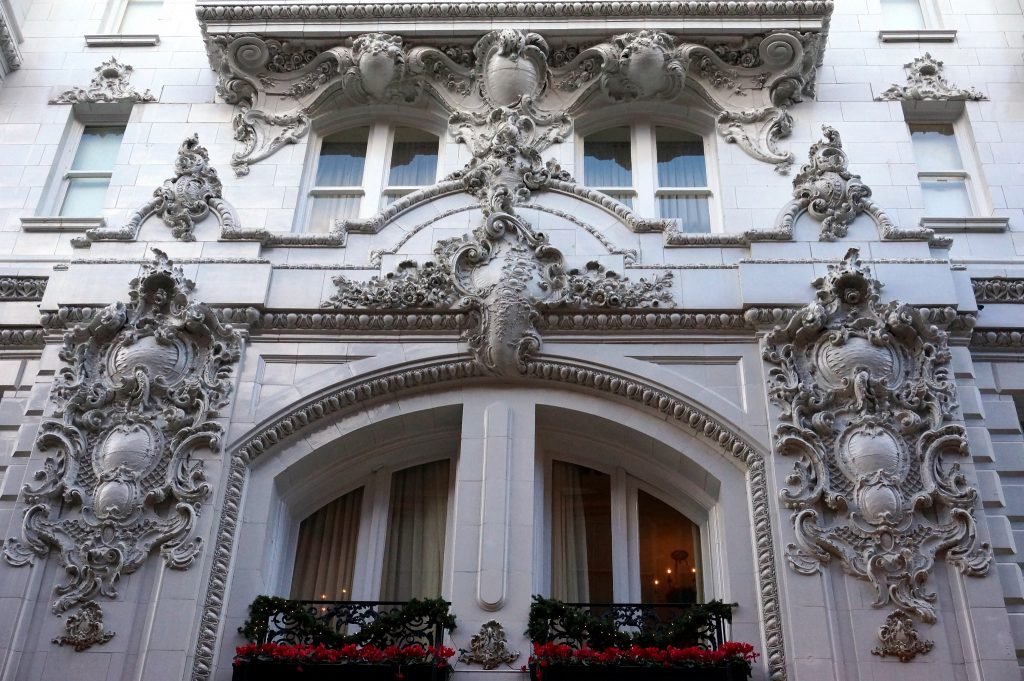
Courtesy of Little Koshka via Flickr
The city is also culturally rooted in voodoo, with several local temples with many active priestesses. See the tomb of the famous voodoo priestess Marie Laveau in St. Louis Cemetery No. 1.
EAT
- New Orleans is home to more than 1,400 restaurants
- Many dishes were invented or perfected in New Orleans with heavy Creole influence, a mixture of Spanish, French and African cultures
- Food is often at the center of celebrations and festivities in New Orleans. Check out one of the 130 annual festivals to get a taste of everything!
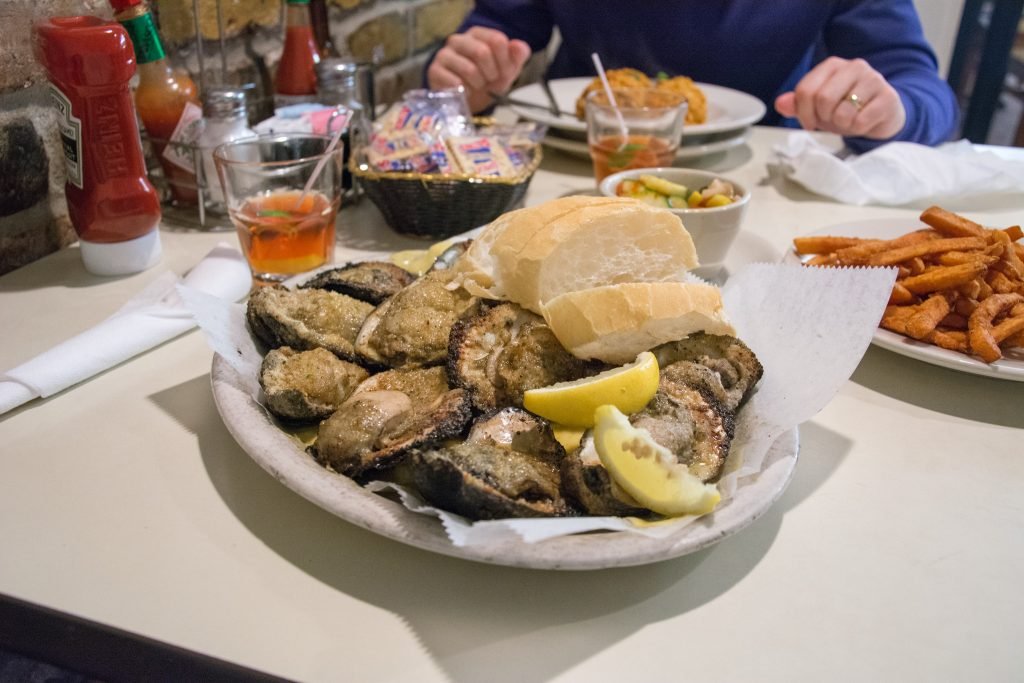
Char-grilled Oysters, Courtesy of MsSaraKelly via Flickr
New Orleans is a unique destination known for world-class cuisine and award-winning chefs. The food has been influenced by the French, Spanish, Creole as well as newer groups like the local Vietnamese, Sicilian and Irish communities.
While traditions like eating read beans and rice on Monday hold strong, there is new and exciting cuisine around every corner. Long time local favorites include jambalaya, gumbo, crawfish etouffee, beignets, boiled seafood such as crawfish and softshell crab, po boys, oysters and so much more.
Antoine’s restaurant, the oldest family-owned restaurant in America founded in 1840, is credited with inventing the delicious Oysters Rockefeller, a dish so rich that the restaurant named it for the wealthy Rockefeller family.
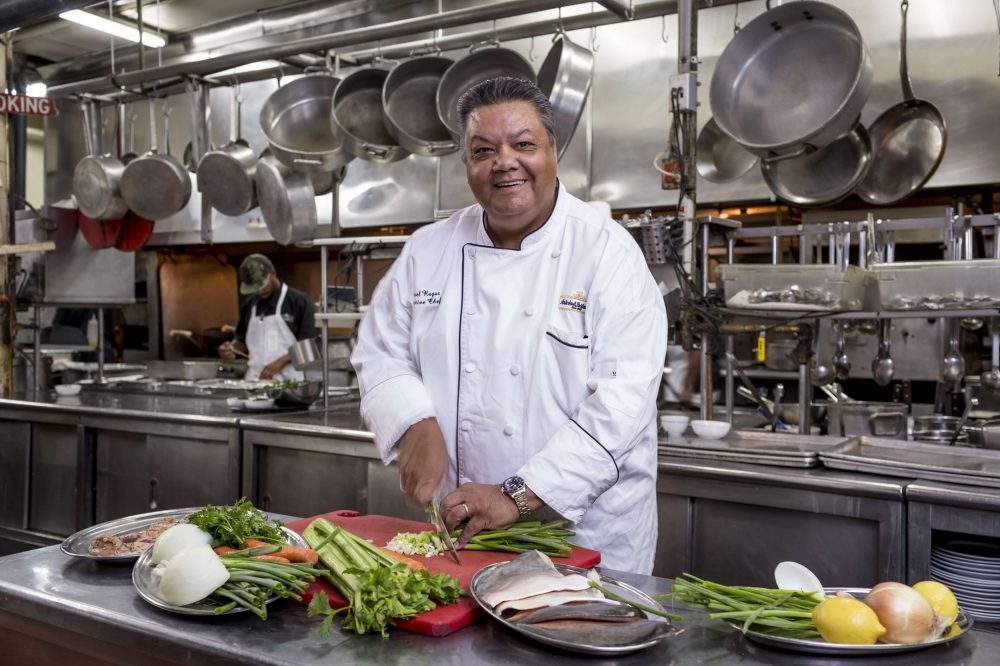
Courtesy of Antoine’s Restaurant
Another local favorite, the muffuletta, is a sandwich stuffed with classically Italian flavors such as salami, ham, provolone and the piquant olive spread that gives it its distinctive taste. This famous sandwich was born in New Orleans, and while restaurants all over the city have their own versions, for a taste of the original, visit Central Grocery, which invented the sandwich in 1903.
Thanks to a culture built around food, dining and family gatherings – which always include food – New Orleans has no shortage of outstanding chefs. And while some of the best have below the national radar, the city is currently home to 11 James Beard Award winning chefs.
From Louisiana natives, like John Besh and Donald Link, to transplants like Emeril Lagasse and recent Top Chef competitor, Nina Compton, chefs from around the world have chosen to call New Orleans home.
With more than 130 registered food festivals annually, it’s no surprise that many of these events not only serve outstanding local food, but are held to celebrate many of our specific culinary treasures. Creole Tomato Fest, Oyster Fest, Tremé Gumbo Festival, Louisiana Seafood Fest, King Cake Festival and Oak Street PoBoy Festival just to name a few.
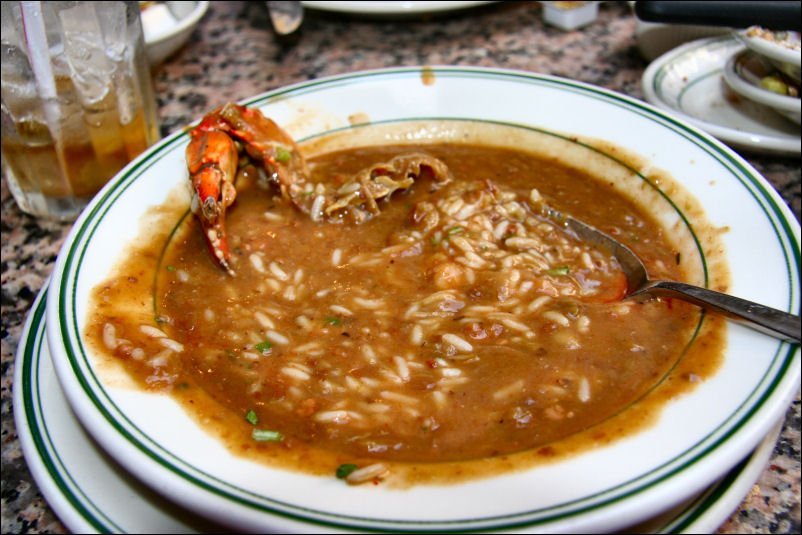
Courtesy of Raymond Bucko, SJ via Flickr
The Big Easy is home to more than 1,400 restaurants from landmark institutions that have been operating since the 1800s, such as Antoine’s and Tujague’s Restaurant, to new and acclaimed hotspots such as Alon Shaya’s James Beard Award-winning Shaya and Nina Compton’s Compere Lapin.
Others have managed to stay under the national radar while continuing to provide classic Southern hospitality. Mother’s Restaurant is a top spot for locals and visitors alike to enjoy true Southern home cooking.
While New Orleans is known for its Creole and European influences, many are surprised to find that one of the largest and most vibrant Vietnamese communities in the south resides in New Orleans.
The community has had its own influence on the culinary scene, with local favorites like Lilly’s Café (no website but located at 1813 Magazine Street) and Magasin Café. New restaurants are also offering surprising cuisine like Alon Shaya’s Israeli cuisine at Shaya and Nina Compton’s Carribbean influences at Compère Lapin.
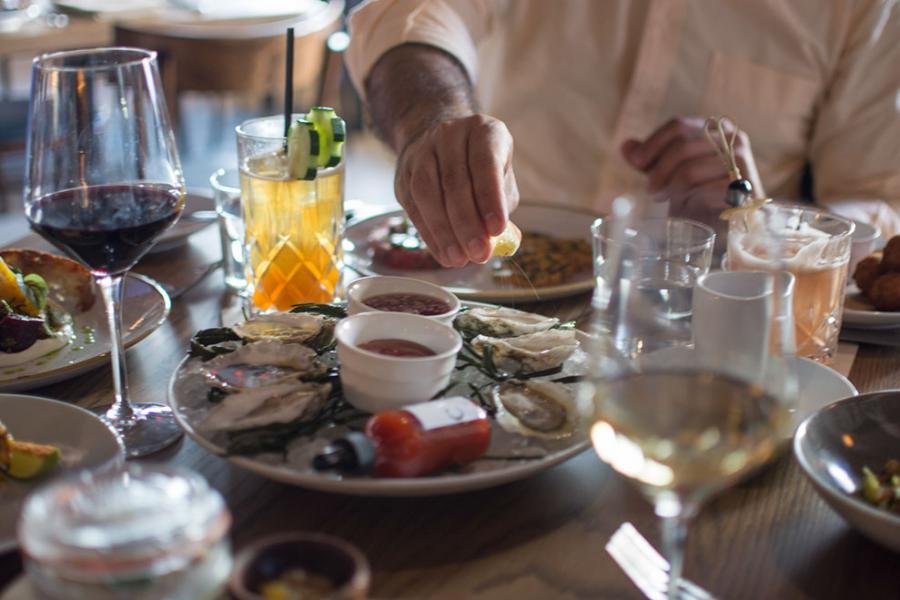
Courtesy of Compere Lapin
There’s no shortage of restaurants (and good restaurants at that) in New Orleans, but not all of it is fine dining. Parkway Bakery is an institution and a local favorite for poboys.
PLAY
- Laissez les bons temps rouler! Let the good times roll! New Orleans doesn’t need an excuse to celebrate or pass a good time. You’ll find music, celebration and a great time around every corner.
- Flat terrain, moderate climate and various bodies of water surrounding the city allow plenty of opportunity to explore
Beyond the excellent dining, beautiful architecture and breathtaking scenery, New Orleans is full of fun and family friendly activities. Take an afternoon to bike the French Quarter, kayak on the historic Bayou St. John, enjoy a dinner cruise on the Mississippi River or learn a new trick with NOLA Flyboarding on Lake Pontchartrain.
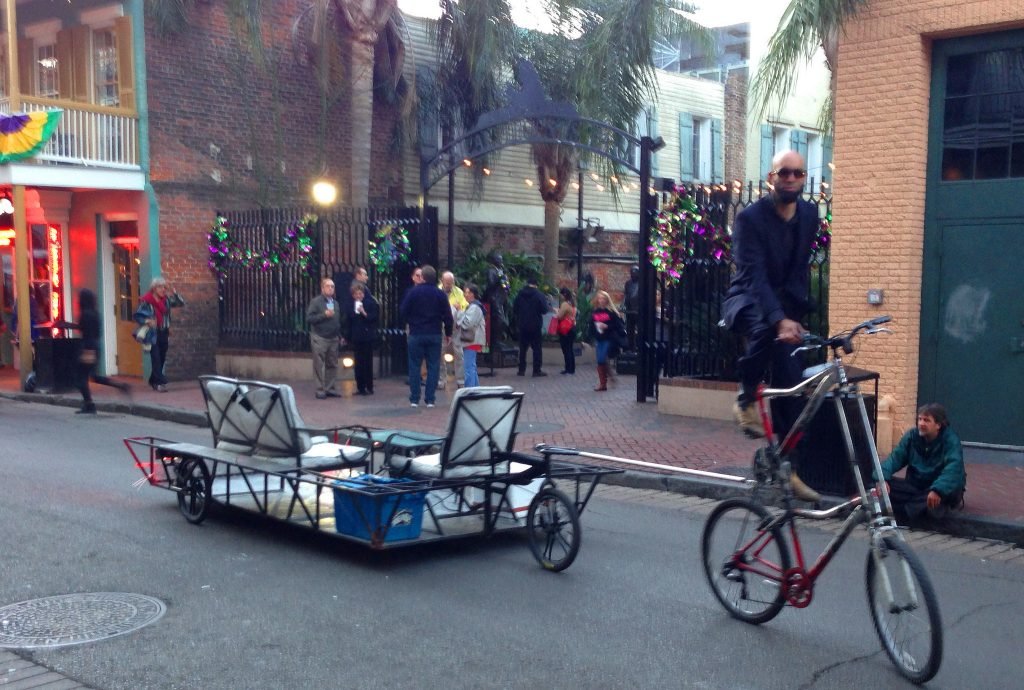
Courtesy of jcsullivan24 via Flickr
Fun for all ages can be found in New Orleans’ City Park, including the Carousel Gardens Amusement Park. Seventeen rides, including the Lady Bug Rollercoaster, Fun Slide, Ferris Wheel and Slime Buckets, are sure keep the whole family entertained.
While there’s no diving or snorkeling in our local bodies of water, the nationally recognized Audubon Aquarium of the Americas offers diving experiences in its Maya Reef exhibit.
New Orleans hosts 130 registered festivals annually. These include festivals that celebrate music, such as Voodoo Music + Arts Experience and the New Orleans Jazz and Heritage Festival; food, like the Oak Street Poboy Festival and the Oyster Festival; and culture, through events including the Tennessee Williams Literary Festival and Congo Square New World Rhythms Fest.
CHILL
The recently unveiled Waldorf Astoria Spa at the Roosevelt Hotel is a haven of luxury and relaxation. With a full range of services, ten private treatment rooms and hydrotherapy options, the spa is refined to meet your needs.
The Ritz-Carlton Spa, New Orleans offers a luxurious retreat with draped chandeliers and bubbling fountains, offering treatments such as the Marie Laveau Voodoo Love Bath and Massage.
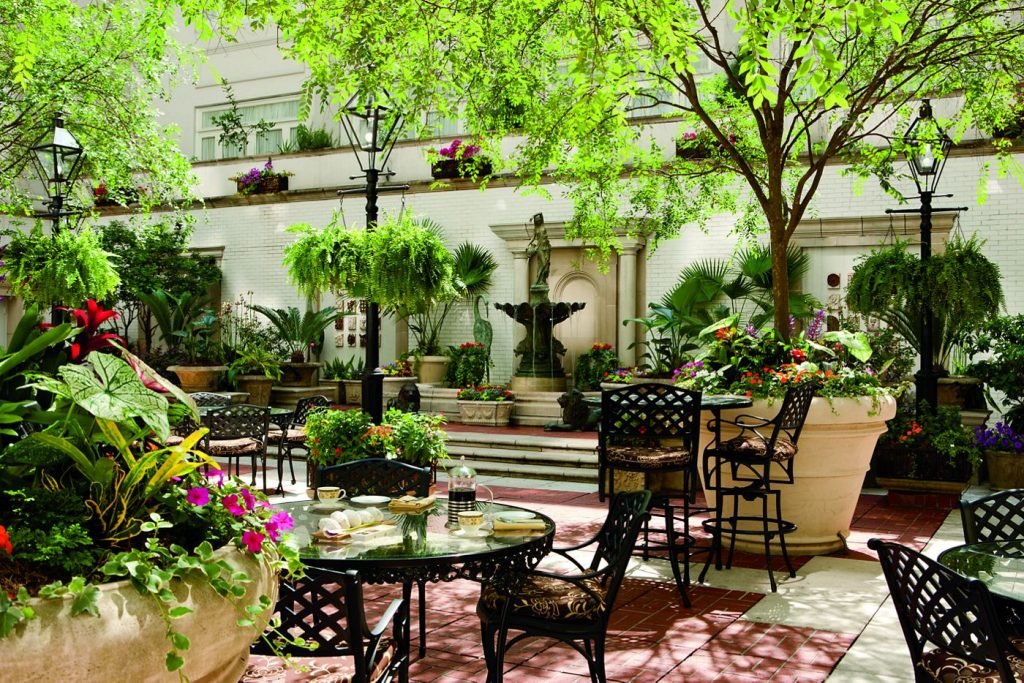
Courtesy of The Ritz Carlton
One of the most innovative spas in the Crescent City, the Spa at Windsor Court provides personalized spa experiences, including oxygen facials, LED light treatments and more.
Spa Aria at Hotel Monteleone takes its cues from the Chinese Yin and Yang, offering services like reflexology and Biomat heated treatments to relieve stress. The spa also offers more traditional massages, facials and other services.
Relaxing in the big easy can come in many forms. Whether it’s sitting out with an iced tea under the oak trees in Audubon Park, taking a slow stroll along the mighty Mississippi River.
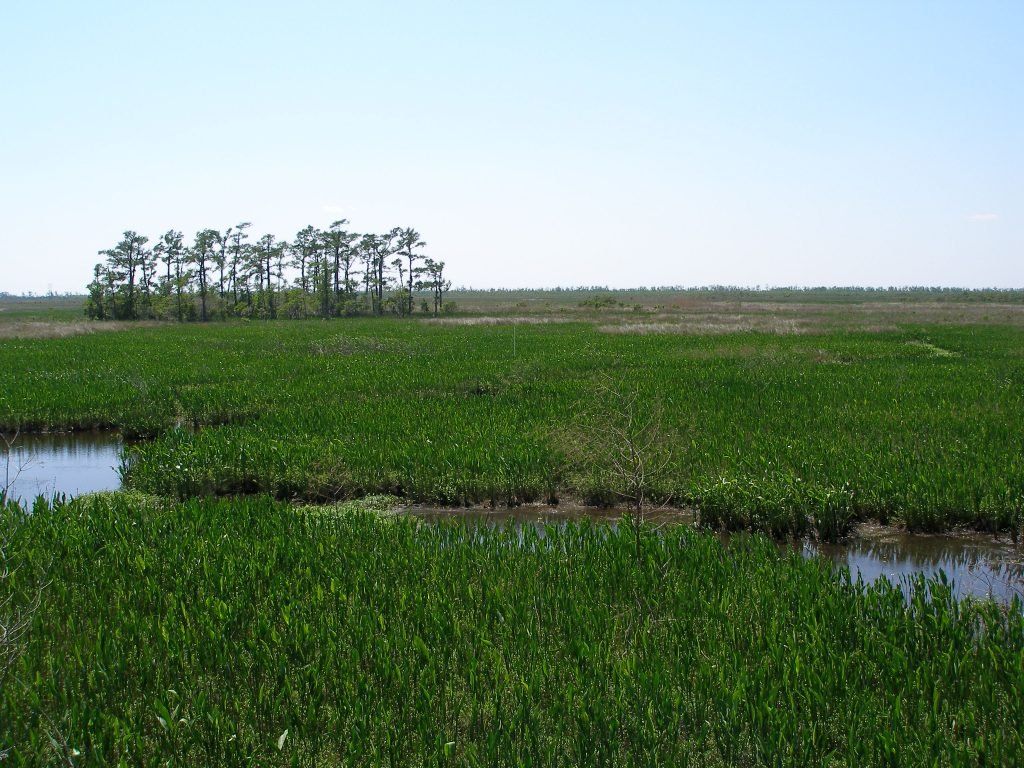
Courtesy of Wikipedia Commons
Take a short trip outside of the city to enjoy walks through Jean Lafitte National Park or explore the bayous and swamps of the area. New Orleans’ year-round moderate climate means outdoor activities are almost never off limits.
STAY
- No matter your style, you will find a place to stay in New Orleans.
- One of the most walkable cities in the country, you will find luxury, extended stay, lifestyle brands and B&Bs all in walking distance of top attractions, restaurants and more.
The greater New Orleans area boast more than 38,400 hotel rooms with 22,000+ within a two mile radius in the downtown area. These accommodations include national luxury brands, small boutiques, intimate bed & breakfast establishments, lifestyle hotels, historic and haunted properties, and more.
Rates vary with season and event, and the city offers a range of hotels from budget-friendly to boutique and luxury. Summertime and the holiday season bring lower rates in New Orleans, while spring, also known as festival season, brings peak crowds and higher rates.
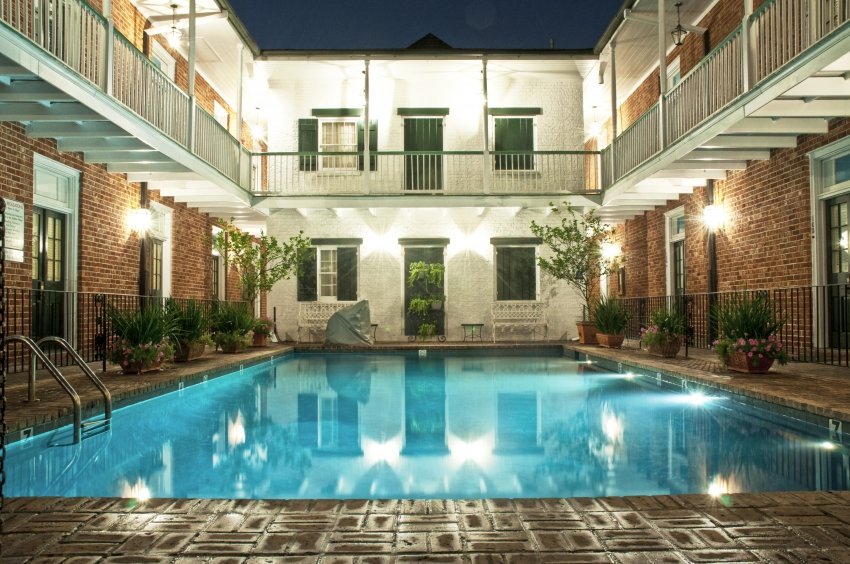
Courtesy of Hotel Provincial
New Orleans’ rich history includes many of the longstanding hotels. Many properties such as the Roosevelt Hotel, the Hotel Monteleone and Hotel Provincial boast long histories including presidential stays, celebrity praise and national accolades.
Since 1983, the Roosevelt Hotel has represented grandeur and luxury accommodations in New Orleans. From the legends that once performed in on-site venues – including Louis Armstrong, Cab Calloway, Ray Charles and Jack Benny – to the iconic Sazerac Bar – named for the official cocktail of New Orleans – The Roosevelt Hotel is steeped in excellence and decadence.
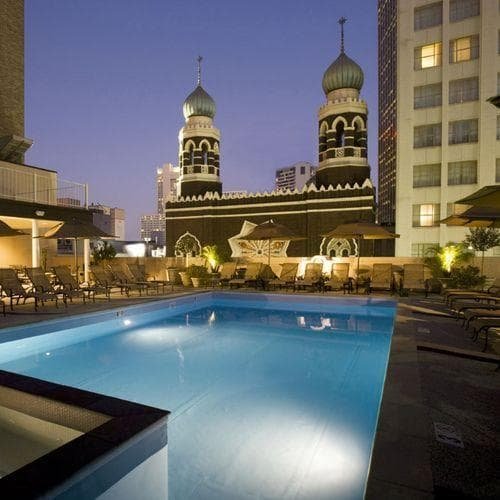
Courtesy of The Roosevelt Hotel
Hotel Monteleone is well known for its Carousel bar – a rotating bar that gives patrons a unique experience and constantly changing view – as well as its haunted history. Since 1886, five generations of Monteleones have kept a watchful eye on the property maintaining its status as “a sparkling jewel in the heart of the French Quarter.”
Now known as one of the premier haunted hotels in New Orleans, stories of ghostly encounters include a locked door opening and closing on its own and an elevator stopping on the wrong floor where a ghostly children play in a chilled hallway.
The Society of Paranormal Research spent several days in the hotel in 2003 and made contact with more than a dozen beings – including former employees and an infant who had died in the hotel.
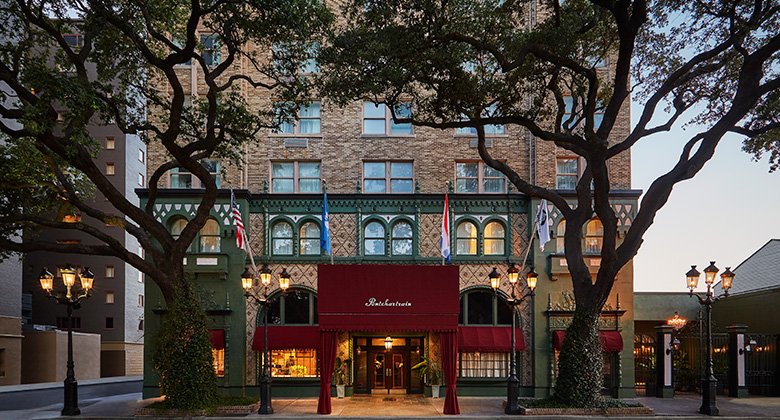
Courtesy of Pontchartrain Hotel
The recently revamped Pontchartrain Hotel was actually where Tennessee Williams wrote A Streetcar Named Desire and was a favorite among stars like Frank Sinatra and Rita Hayworth in the 1920s.
TIPS
- While most people think to come to New Orleans to participate in the revelry of Mardi Gras, music lovers should consider a visit during French Quarter Fest to experience the largest showcase of Louisiana food and music in the world!
- Since many of our local phrases came from French, the translation into English has created some unique phrases. You’ll catch many locals saying they’re going to “make groceries” when they head to the grocery store, and we call our medians “neutral grounds” as the Canal median was once the neutral ground between the city’s French inhabitants and American newcomers after the Louisiana Purchase.
- If you ask for directions, you may not get the typical North, South, East and West directions you were hoping for. Locals use the Mississippi River and Lake Pontchartrain as reference points.
- Hop on streetcar to see the city while riding a national historic landmark! Heads up: it’s called a streetcar – not a trolly or tram.

